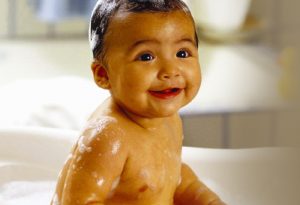 Most drownings involving young children occur in residential settings. Children under the age of five years do not struggle in the water. They can drown without making a sound.
Most drownings involving young children occur in residential settings. Children under the age of five years do not struggle in the water. They can drown without making a sound.
To learn more about the Consumer Product Safety Commission "Pool Safely" campaign, visit https://www.poolsafely.gov/
The VDH Injury and Violence Prevention Program and the VDH Office of Environmental Health Services have joined together to prevent drowning. To learn more about Drowning Prevention and Healthy Swimming work in Virginia, click here.
Learn about the VDH Office of Environmental Health Services and the Virginia Department of Housing and Community Development resources here and on their website. The VDH Injury and Violence Prevention program does not regulate, provide technical assistance, oversee, or respond with this information for these items:
- Any pool - public or private:
-
- VA Code that states local ordinances can require pool fences: https://law.lis.virginia.gov/vacode/title15.2/chapter9/section15.2-921/. Refer to your local codes to check what's required (private and public pools).
- Certain localities have pool codes - refer to your local planning and zoning department for any local rules. The Virginia Department of Housing and Community Development has a list, or Code Officials Directory: https://www.dhcd.virginia.gov/code-officials-directory
- Virginia Graeme Baker Pool and Spa Safety Act - safety equipment requirements to reduce the chances of entrapment by pool drains and suction outlets: https://www.federalregister.gov/documents/2019/05/24/2019-10845/virginia-graeme-baker-pool-and-spa-safety-act-incorporation-by-reference-of-successor-standard
- The USBC refers to the International Swimming Pool and Spa Code (ISPSC) for construction of pools. The following link is to a page where all of the Virginia codes, including the ISPSC, can be accessed online (free):https://codes.iccsafe.org/codes/virginia
- Public pools:
-
- Regulations Governing Tourist Establishment Swimming Pools and Other Public Pools (12VAC5-460) has requirements for safety equipment. Refer to your applicable building code:
Learn about our prevention work
Drowning Prevention Tips at Home, Pool, or Other Sites:
- Learn to swim yourself and have your child learn to swim. Learn life-saving skills, including swimming basics and cardiopulmonary resuscitation (CPR)
- Be prepared. Have rescue equipment at home, post 9-1-1 emergency information, and think through an emergency action plan.
- Never leave a child unsupervised in a bathtub, even for a second. Most siblings are not old enough to properly supervise a young child in this situation.
- Never leave a child alone near a pool/spa, toilet, water-filled bucket, pond, or any standing body of water.
- Empty all tubs, buckets, containers and kiddie pools immediately after use. Store them upside down so they don’t collect water.
- upside down so they don’t collect water.
- Close toilet lids and use toilet seat locks to prevent drowning. Keep doors to bathrooms and laundry rooms closed.
- Make sure kids learn these five water survival skills and that they are able to:
- step or jump into water over their heads and return to the surface;
- float or tread water for one minute;
- turn around in a full circle and find an exit;
- swim 25 yards to exit the water; and
- exit the water. If in a pool, be able to exit without using the ladder
- Teach children that swimming in open water is not the same as swimming in a pool. They need to be aware of uneven surfaces, river currents, ocean undertow and changing weather.
- An unclimbable, five-foot fence should separate the pool/spa from the residence. Fence openings should be no more than four inches wide so children cannot squeeze through the spaces.
- The fence gate should be self-closing and selflatching with latches above a child’s reach.
- Never rely on flotation devices or swimming lessons to protect a child.
- Don’t allow children to play in the pool/spa area. Never keep toys around or in a pool.
- Avoid swimming after dark.
- Risk for drowning increases in muddy water of lakes, ponds, and rivers.
- Avoid weak or thawing ice on any body of water.
- Diving into shallow water can cause spinal injuries. Never allow diving in above-ground pools, shallow water, or unknown areas.
- Be aware of local weather conditions prior to engaging in recreational water activities.
- Use the buddy system when swimming or boating.
- Require all persons to wear Coast Guard approved personal flotation devices when involved in water-related recreational activities, regardless of swimming ability.
- Avoid using alcohol or other drugs prior to and during recreational water activities.
- Assign an adult to be a “Water Watcher” who is responsible for actively supervising children in and around water even if a lifeguard is present.
For more information, please visit the following websites:
For more information about child drowning deaths, visit https://www.vdh.virginia.gov/content/uploads/sites/18/2021/10/2019-Drowning-Report.pdf
- Centers for Disease Control and Prevention: Pools and Hot Tubs at Home
- YMCA
- American Red Cross
- Consumer Product Safety Commission Neighborhood Safety Network
- National Safety Council
- Safe Kids USA
- Consumer Product Safety Commission. Virginia Graeme Baker Pool and Spa Safety Act; Water Watchers.
- Virginia Department of Wildlife Resource
To learn more about the Consumer Product Safety Commission "Pool Safely" campaign, visit https://www.poolsafely.gov/
To order "Pool Safely" materials, visit https://www.poolsafely.gov/educational-materials-catalog/
